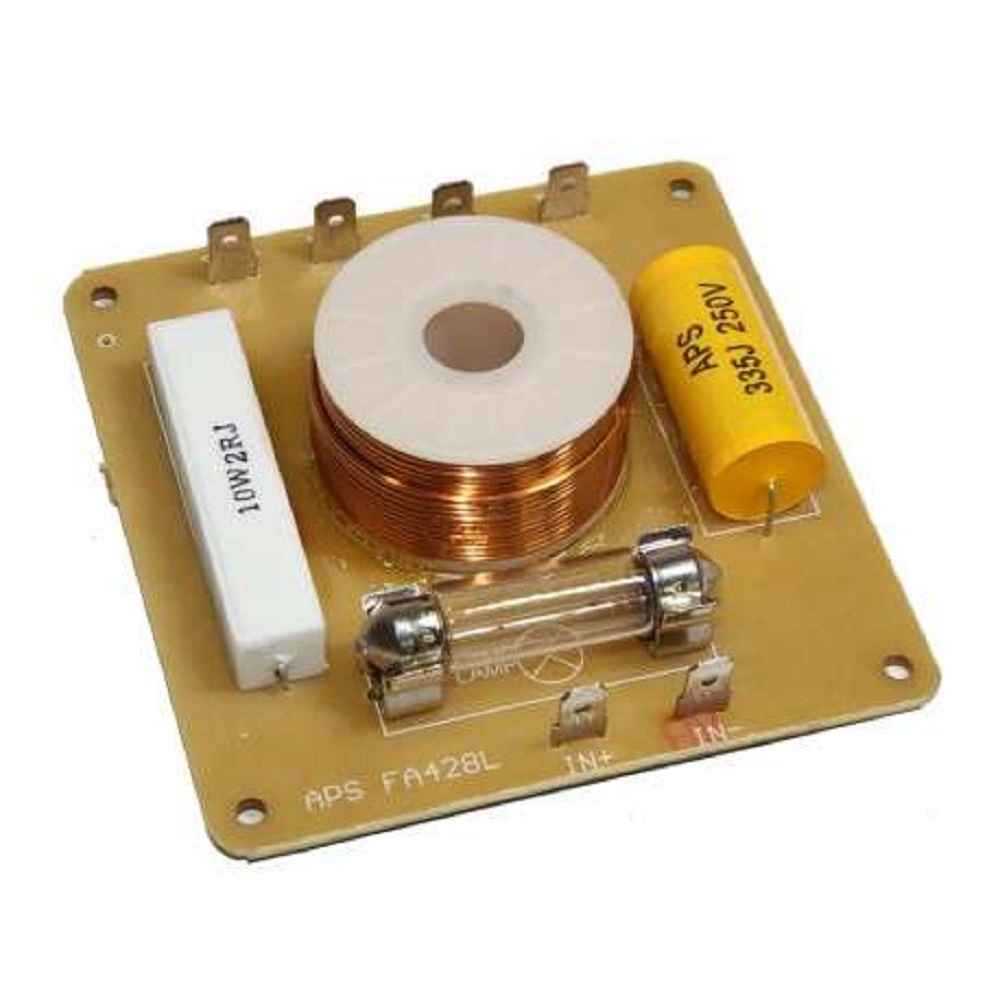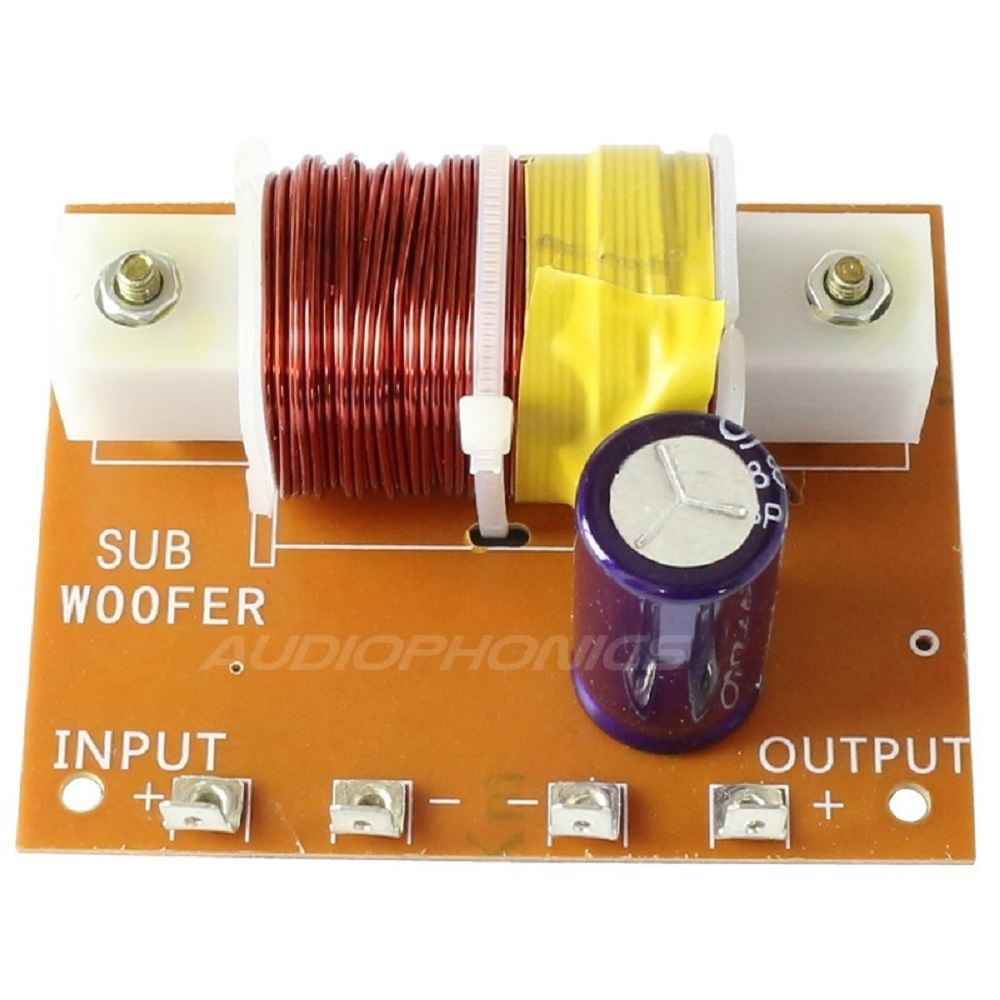Subwoofers are a crucial component of any sound system, providing the powerful bass that gives music its depth and impact. To get the most out of a subwoofer, it is important to understand the role of the low pass filter.
This article will explain what a low pass filter is, how it works, and why it is important for subwoofers.

What is a Low Pass Filter on a Subwoofer?
A low pass filter is an electronic circuit that allows low frequency sounds to pass through while blocking high frequency sounds.
In the context of a subwoofer, the low pass filter helps to ensure that the subwoofer is only reproducing the deep bass frequencies and not the higher frequency sounds that should be handled by the main speakers.
How a Low Pass Filter Works
A low pass filter circuit is made up of several components, including a capacitor and a resistor. The capacitor stores electrical energy, and the resistor releases that energy back into the circuit.
When a sound signal is applied to the circuit, the high frequency components of the signal are blocked by the capacitor, while the low frequency components are allowed to pass through.
The cut-off frequency is the point at which the low pass filter begins to block high frequency sounds. This cut-off frequency can be adjusted by changing the values of the capacitor and resistor in the circuit.
The higher the cut-off frequency, the more high frequency sounds will be allowed to pass through the filter.

Advantages of Using a Low Pass Filter on a Subwoofer
Using a low pass filter on a subwoofer has several important benefits. First and foremost, it helps to improve the overall sound quality by ensuring that the subwoofer is only reproducing the low frequency sounds that it was designed to handle.
This eliminates any harsh or distorted sounds that might be produced by the subwoofer trying to reproduce higher frequency sounds.
Second, a low pass filter helps to protect the subwoofer from overloading. If the subwoofer is asked to reproduce high frequency sounds, it can be damaged by the resulting distortion and clipping.
By using a low pass filter, the subwoofer is protected from these harmful signals.
Finally, using a low pass filter can enhance the performance of the subwoofer. By only allowing the subwoofer to reproduce low frequency sounds, the subwoofer can produce deeper and more powerful bass, giving music its full impact and presence.
Types of Low Pass Filters
There are two main types of low pass filters: passive and active.
A passive low pass filter uses only passive components, such as capacitors and resistors, to filter the signal. An active low pass filter uses an active component, such as an operational amplifier, to filter the signal.
Passive low pass filters are simple and inexpensive, but they can have a limited frequency range and may not provide as much control over the cut-off frequency as an active filter.
Active low pass filters are more versatile and provide better control over the cut-off frequency, but they are also more complex and expensive.

Setting the Low Pass Filter on a Subwoofer
When setting the low pass filter on a subwoofer, there are several factors to consider. The first factor is the cut-off frequency.
The cut-off frequency should be set so that the subwoofer is only reproducing the lowest frequency sounds that it was designed to handle. This will ensure that the subwoofer is producing the best possible sound quality and protecting itself from damage.
The second factor to consider is the slope of the low pass filter. The slope determines how quickly the filter blocks high frequency sounds.
A steep slope will block high frequency sounds more quickly, while a shallow slope will allow more high frequency sounds to pass through. The slope should be set based on the type of music that will be played and the desired sound quality.
Finally, the subwoofer should be tested after the low pass filter has been set. This can be done by playing music with a wide range of frequencies and listening for any distortion or harshness in the sound.
If any such issues are encountered, the cut-off frequency and slope of the low pass filter can be adjusted until the best possible sound quality is achieved.
Conclusion
In conclusion, the low pass filter is an essential component of a subwoofer system, providing the powerful bass that gives music its depth and impact.
By using a low pass filter, the sound quality of the subwoofer is improved, the subwoofer is protected from damage, and the performance of the subwoofer is enhanced.
Whether you choose a passive or active low pass filter, it is important to set the cut-off frequency and slope correctly to get the best possible sound quality from your subwoofer.
With a properly set low pass filter, your subwoofer will produce deep and powerful bass that will bring your music to life.
What is the difference between passive and active low pass filters?
Passive low pass filters use only passive components such as capacitors and resistors to filter the signal, while active low pass filters use an active component such as an operational amplifier to filter the signal.
Passive filters are simple and inexpensive, but have limited frequency range and control over cut-off frequency. Active filters are more versatile and provide better control, but are more complex and expensive.
How does the cut-off frequency affect the sound quality of the subwoofer?
The cut-off frequency determines the lowest frequency sounds that the subwoofer reproduces.
Setting the cut-off frequency correctly ensures that the subwoofer is only reproducing the lowest frequency sounds it was designed to handle, improving the sound quality and protecting the subwoofer from damage.
What is the purpose of the slope of the low pass filter?
The slope determines how quickly the filter blocks high frequency sounds. A steep slope will block high frequency sounds more quickly, while a shallow slope will allow more high frequency sounds to pass through.
The slope should be set based on the type of music being played and the desired sound quality.
Can a low pass filter be adjusted after it has been set?
Yes, a low pass filter can be adjusted after it has been set.
The subwoofer should be tested after the low pass filter has been set and if any issues with distortion or harshness in the sound are encountered, the cut-off frequency and slope can be adjusted until the best possible sound quality is achieved.
Is it necessary to set the low pass filter for a subwoofer?
Yes, it is necessary to set the low pass filter for a subwoofer. The low pass filter provides the powerful bass that gives music its depth and impact and improves the sound quality of the subwoofer.
By setting the low pass filter correctly, the subwoofer will produce deep and powerful bass, enhancing the performance of the subwoofer and bringing the music to life.
